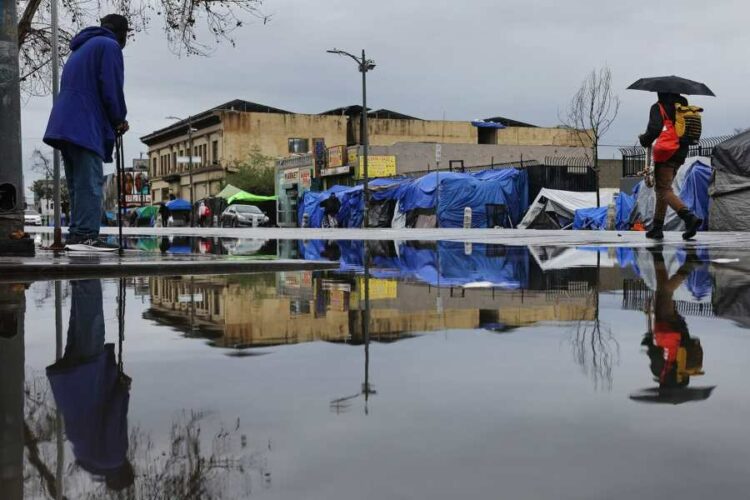In a pivotal moment that could redefine California’s landscape, the electorate’s narrow approval of Proposition 1 heralds a watershed in the state’s protracted fight against homelessness. This legislative milestone, born from a referendum that has captivated and divided communities, underscores a profound collective awakening to the escalating humanitarian crisis unfurling across urban and suburban spaces alike. As the measure carves out a $6.4 billion path to combat homelessness, it also casts a spotlight on the stark fiscal realities shadowing California’s ambition, with a looming $73 billion budget deficit that raises sobering questions about financial sustainability and priorities.
This juxtaposition of compassion against economic pragmatism encapsulates the complex ethos of a state at a crossroads, committed to confronting its most intractable social issues while navigating the treacherous waters of fiscal responsibility. The passage of Proposition 1, thus, stands not merely as a policy shift but as a bold declaration of societal values, signaling a readiness to invest in transformative solutions even as it grapples with the daunting economics of such a commitment.
The Core of Proposition 1
At the heart of Governor Gavin Newsom’s comprehensive approach to ameliorating the homelessness crisis in California is Proposition 1, a measure that represents a pivotal redirection of state resources and priorities.
With its roots in the redirection of funds generated from a 2004 wealth tax, previously allocated across a broader spectrum of mental health services, the proposition earmarks these crucial resources specifically for housing and substance abuse treatment for the homeless.
This strategic pivot underscores a broader reevaluation of the state’s fiscal commitments, aligning them more closely with the urgent needs of its most vulnerable populations. The initiative’s ambition is further highlighted by the proposal to raise $6.38 billion through bond issuance, a substantial financial undertaking aimed at materially expanding the state’s capacity to provide new housing units and enhance mental health treatment infrastructure.
This bold financial maneuver is designed not just to address the immediate exigencies of homelessness but to lay a more durable foundation for long-term recovery and support, reflecting a significant evolution in California’s policy stance and its approach to solving one of its most pressing and persistent challenges.
Financial Implications and Strategic Priorities
As California faces an expanding budget deficit, anticipated to reach $73 billion, the approval of Proposition 1 introduces complex financial considerations. Despite this, proponents argue the imperative to address the homelessness crisis—a condition affecting nearly a third of the nation’s homeless population residing in California—justifies the measure’s substantial fiscal impact. With over $22 billion already spent on various homelessness initiatives, the persistent and growing challenge underscores the necessity for a targeted and systemic approach.
Criticisms and Concerns
Opposition to Proposition 1 centers on concerns over the potential neglect of other crucial mental health and preventative programs not directly aligned with housing or drug treatment. The measure’s standardized funding formula also raises questions about its applicability across California’s diverse counties, highlighting fears of unintended consequences on smaller communities and essential services.
Broad Support and the Path Forward
Governor Newsom’s rallying of a wide-ranging coalition underscores the perceived urgency and necessity of Proposition 1 as a fundamental reform of the state’s mental health and homelessness strategy. With significant financial backing, the campaign for the proposition has significantly overshadowed opposition efforts, setting the stage for a major policy implementation phase.
As California moves to act on Proposition 1’s mandates, the focus shifts to the practicalities of its implementation and the real-world impacts on the state’s homelessness crisis. The initiative’s success will be measured not only in financial terms but also in the effectiveness of collaborations across government levels, service providers, and communities. This moment represents a critical test of California’s capacity to innovate and respond to one of its most pressing social challenges with compassion and strategic insight.
The passage of Proposition 1 embodies a significant, though contentious, stride towards redefining California’s approach to homelessness. It crystallizes a broad-based desire for transformative action, premised on the belief that through determined investment and cooperative effort, the state can advance significantly in addressing the needs of its most vulnerable populations. As California embarks on this ambitious path, it not only seeks to mitigate a critical social issue within its borders but also to set a precedent that might inspire and inform similar efforts nationwide.







